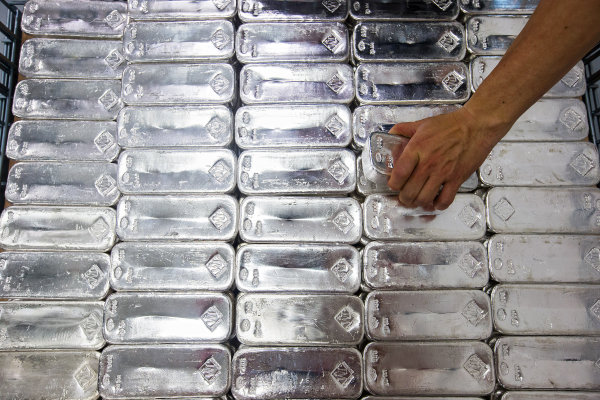Selling Leveraged Borrowed Paper
Silver's recent 4 year lows of 17 USD have been caused by sell orders in the futures markets where, through leverage, a 10% deposit can control a 100% position and it is possible to sell "borrowed paper silver" that one does not own. This practice is called "shorting" and it allows relatively small amounts of money to create massive paper sell orders
Shorting is a way of betting on lower prices and, if short volumes are strong enough and the market small enough, they become a self-fulfilling prophecy as shorters dump even more money into shorts to push price lower and ideally demoralize holders of paper silver (longs) to sell at a loss and further push price lower.
Because silver is the smallest widely traded commodity market, silver is a preferred market for such shorting. Furthermore the leveraged silver paper volumes easily dwarf the physical market so that price can be easily pushed - over the short term- in one direction or the other regardless of physical supply or demand. In the case of massive silver shorting some reasons will typically be invented to rationalize lower prices but the goal for shorters is to "sell first" and then ensure they can "buy back lower" later.
The other side of shorting, however is the requirement for shorters to eventually close their position by returning the borrowed paper which they must do by reversing their position and buying paper silver. Thus the more shorting occurs the more pent-up buying will have to occur later.
Once the relationships between paper contracts, leverage and shorting is understood we can start to make sense of a few recent futures exchange statistics which point to silver being a great long-term buy at current prices.
Paper Silver is now 6,626 Contracts (33 Million oz) Net short
According to the Commodity Futures Trading Commission, hedge funds and money managers have a net short position of 6,626 contracts and that this position has been getting bigger for a while.
Speculators and hedge fund managers have been selling silver paper position that they do not own in a bet to lower prices. They now have a combined liability of over 33 million ounces of silver that they are obligated to buy, just to close their position. The amount might not be huge in paper terms but the very fact that it is negative (gold in comparison has net longs / positives of 44,200 contracts) means that paper traders have pushed prices exceedingly low indeed.
As a result of the low prices the gold to silver ratio is now hovering around 70. In other words, at current valuations you can exchange an ounce of gold for 70 ounces of silver making this metal cheap compared to gold as well, causing some of our customers to switch into silver from gold. This is particularly true as for most of recorded history this ratio was 15 to 1, which roughly matches the occurrence of gold versus silver in nature.

100 oz Johnson Matthey Bars at The Safe House prior to parcelization. Courtesy of Bloomberg
Over the short term silver could be pushed even lower by leveraged paper futures, but ultimately the reality of decreasing physical silver supplies will assert itself and over the long term silver at 17 USD is a great value indeed.
by Gregor Gregersen
and The Safe House / Silver Bullion Team |
 |
|

